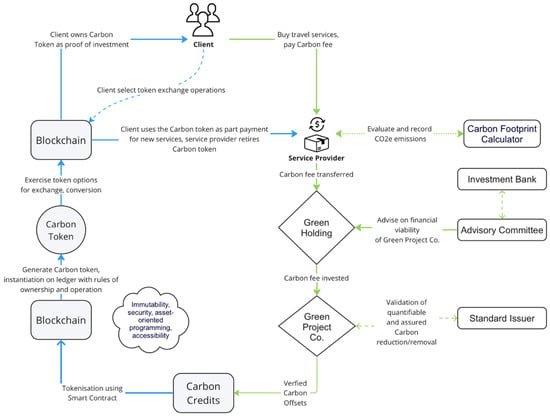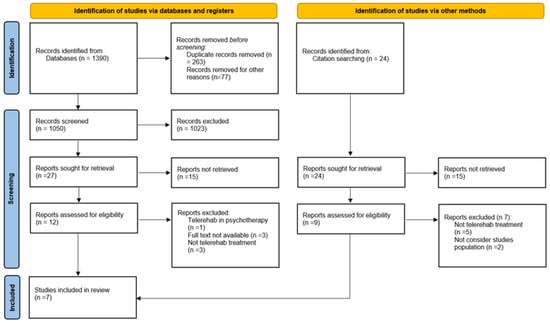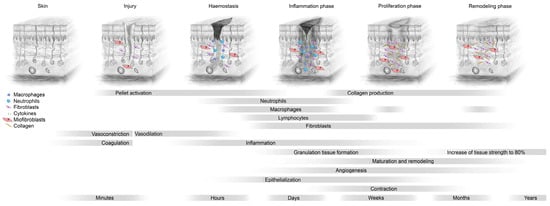In recent decades, ionic liquids (ILs) have garnered research interest for their noteworthy properties, such as thermal stability, low or no flammability, and negligible vapour pressure. Moreover, their tunability offers limitless opportunities to design ILs with properties suitable for applications in many industrial
[...] Read more.
In recent decades, ionic liquids (ILs) have garnered research interest for their noteworthy properties, such as thermal stability, low or no flammability, and negligible vapour pressure. Moreover, their tunability offers limitless opportunities to design ILs with properties suitable for applications in many industrial fields. This study aims to synthetise two series of methylimidazolium ILs bearing long alkyl chain in their cations (C9, C10, C12, C14, C16, C18, C20) and with tetrafluoroborate (BF
4) and the 1,3-dimethyl-5-sulfoisophthalate (DMSIP) as counter ions. The ILs were characterised using
1H-NMR and MALDI-TOF, and their thermal behaviour was investigated through DSC and TGA. Additionally, the antimicrobial, anticancer, and cytotoxic activities of the ILs were analysed. Moreover, the most promising ILs were incorporated at different concentrations (0.5, 1, 5 wt%) into polyvinyl chloride (PVC) by solvent casting to obtain antimicrobial blend films. The thermal properties and stability of the resulting PVC/IL films, along with their hydrophobicity/hydrophilicity, IL surface distribution, and release, were studied using DSC and TGA, contact angle (CA), SEM, and UV–vis spectrometry, respectively. Furthermore, the antimicrobial and cytotoxic properties of blends were analysed. The in vitro results demonstrated that the antimicrobial and antitumor activities of pure ILs against t
Listeria monocytogenes,
Escherichia coli,
Pseudomonas fluorescens strains, and the breast cancer cell line (MCF7), respectively, were mainly dependent on their structure. These activities were higher in the series containing the BF
4 anion and increased with the increase in the methylimidazolium cation alkyl chain length. However, the elongation of the alkyl chain beyond C16 induced a decrease in antimicrobial activity, indicating a cut-off effect. A similar trend was also observed in terms of in vitro biocompatibility. The loading of both the series of ILs into the PVC matrix did not affect the thermal stability of PVC blend films. However, their T
onset decreased with increased IL concentration and alkyl chain length. Similarly, both the series of PVC/IL films became more hydrophilic with increasing IL concentration and alkyl chain. The loading of ILs at 5% concentration led to considerable IL accumulation on the blend film surfaces (as observed in SEM images) and, subsequently, their higher release. The biocompatibility assessment with healthy human dermal fibroblast (HDF) cells and the investigation of antitumoral properties unveiled promising pharmacological characteristics. These findings provide strong support for the potential utilisation of ILs in biomedical applications, especially in the context of cancer therapy and as antibacterial agents to address the challenge of antibiotic resistance. Furthermore, the unique properties of the PVC/IL films make them versatile materials for advancing healthcare technologies, from drug delivery to tissue engineering and antimicrobial coatings to diagnostic devices.
Full article
 IJMS
IMPACT
IJMS
IMPACT Applied Sciences
IMPACT
Applied Sciences
IMPACT Sustainability
IMPACT
Sustainability
IMPACT Sensors
IMPACT
Sensors
IMPACT JCM
IMPACT
JCM
IMPACT Materials
IMPACT
Materials
IMPACT Molecules
IMPACT
Molecules
IMPACT Energies
IMPACT
Energies
IMPACT Electronics
IMPACT
Electronics
IMPACT Remote Sensing
IMPACT
Remote Sensing
IMPACT Cancers
IMPACT
Cancers
IMPACT Nutrients
IMPACT
Nutrients
IMPACT Mathematics
IMPACT
Mathematics
IMPACT Foods
IMPACT
Foods
IMPACT Buildings
IMPACT
Buildings
IMPACT Polymers
IMPACT
Polymers
IMPACT Animals
IMPACT
Animals
IMPACT Water
IMPACT
Water
IMPACT Plants
IMPACT
Plants
IMPACT Agronomy
IMPACT
Agronomy
IMPACT Biomedicines
IMPACT
Biomedicines
IMPACT Processes
IMPACT
Processes
IMPACT Microorganisms
IMPACT
Microorganisms
IMPACT Diagnostics
IMPACT
Diagnostics
IMPACT Nanomaterials
IMPACT
Nanomaterials
IMPACT Viruses
IMPACT
Viruses
IMPACT Medicina
IMPACT
Medicina
IMPACT Healthcare
IMPACT
Healthcare
IMPACT Cells
IMPACT
Cells
IMPACT Forests
IMPACT
Forests
IMPACT Agriculture
IMPACT
Agriculture
IMPACT Land
IMPACT
Land
IMPACT JMSE
IMPACT
JMSE
IMPACT IJERPH
IJERPH
 Symmetry
IMPACT
Symmetry
IMPACT Genes
IMPACT
Genes
IMPACT Pharmaceutics
IMPACT
Pharmaceutics
IMPACT Coatings
IMPACT
Coatings
IMPACT Micromachines
IMPACT
Micromachines
IMPACT Pharmaceuticals
IMPACT
Pharmaceuticals
IMPACT Atmosphere
IMPACT
Atmosphere
IMPACT Children
IMPACT
Children
IMPACT Religions
IMPACT
Religions
IMPACT Antioxidants
IMPACT
Antioxidants
IMPACT Life
IMPACT
Life
IMPACT Metals
IMPACT
Metals
IMPACT Biomolecules
IMPACT
Biomolecules
IMPACT Vaccines
IMPACT
Vaccines
IMPACT Education Sciences
IMPACT
Education Sciences
IMPACT Minerals
IMPACT
Minerals
IMPACT Horticulturae
IMPACT
Horticulturae
IMPACT Brain Sciences
IMPACT
Brain Sciences
IMPACT JPM
IMPACT
JPM
IMPACT Bioengineering
IMPACT
Bioengineering
IMPACT





























